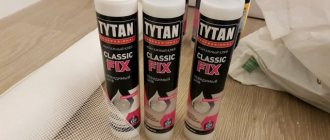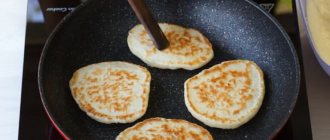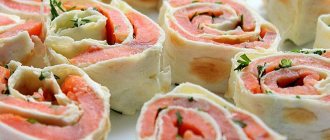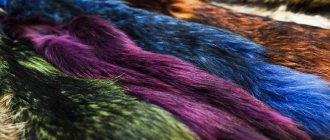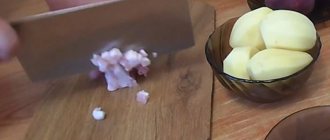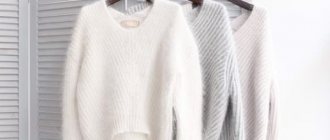Figurines for the interior: types and genres
First of all, let's clarify what a figurine is. Strictly speaking, this is a sculpture whose height does not exceed 80 centimeters and length – 1 meter. Such things can have a cult purpose, utilitarian, or purely decorative. Figurines include copies of monumental masterpieces and monuments, souvenirs, ethnic crafts, awards, toys - soldiers, nesting dolls, Dymkovo buffoons and ladies.
The genre range of figurines or, in other words, small sculptures is as diverse as large sculptures. They are:
- portraits;
- mythological;
- household;
- historical;
- symbolic;
- allegorical;
- animalistic.
In principle, the names of the genres speak for themselves. Portrait figurines include busts, torsos and figures of people whose appearance is clearly distinguishable. Mythological - images of characters from various legends and tales. Household works include works illustrating everyday scenes from life. Historical miniature sculpture is dedicated to certain events and heroes. Symbolic and allegorical - personifies various phenomena, human qualities, sins and virtues. Despite the similarity of these two genres, sculptural allegories have an exact, well-known “decoding”, while symbolic allegories are more polysemantic and are interpreted differently. Well, figurines of the animalistic genre depict animals, which, however, can also be both a symbol and an allegory.
It is also worth mentioning kinetic sculpture - the so-called mobiles, which, thanks to spring mechanisms, create the effect of continuity, the illusion of a perpetual motion machine.
Materials and features
Sculpture is therefore the most ancient form of fine art because it does not require specific raw materials. For the manufacture of interior figurines they use:
- stone – primarily marble;
- clay, faience and porcelain;
- metals and alloys;
- tree;
- glass, crystal;
- plaster, alabaster;
- precious and ornamental minerals;
- plastic, rubber, other synthetics.
Before you buy a nice sculpture or display a gift, answer the question: does its material match the style of your home?
Let's take, for example, bronze and marble, classical raw materials for sculpture, including small forms. Bronze serves to embody masculinity, strength and intensity. For example, a bronze bust of a thinker or an equestrian figurine of a military leader will add solidity and respectability to the study, but are unlikely to decorate the bedroom. And marble is used to convey the feminine, plastic, delicate forms. Marble psyches, naiads and nymphs will bring a bit of “yin” energy and even a little eroticism into the atmosphere, but they can disrupt the business, rational order.
Figurines carved from wood, miniatures made from porcelain, glass, alabaster, and dull metal can be considered universal. They will not seem foreign either in a man’s “den” or in a woman’s boudoir.
Why you can't keep old things
When creating a homely atmosphere, it is worth remembering that old, unnecessary things not only clog up free space, but also attract poverty and negative energy. Old things prevent you from acquiring new things; a person programs himself for poverty and failure. According to Feng Shui, trash interferes with the free flow of life-giving energy and prevents favorable changes, since there is no free space for them.
Texture and style
Any interior will sparkle with expressive facets if you add figurines to it! The main thing is that their appearance matches the style of the house...
All interior styles in one list
Thus, figurines made of marble, bronze and porcelain will be appropriate in a classical setting, in historical interiors - from neo-Gothic to art nouveau. Figurines made of wood and faience will invigorate both a modern classic interior and a country style. And if the wood is noble, exotic, then objects made from it will add chic to the art deco surroundings. Sculptures made of wood, porcelain and ceramics will emphasize the originality of the house if it is furnished in Japanese, Chinese, or African tastes. Ceramics will take root both in a modern apartment and where retro reigns, and will also fit well into furniture a la Russe, Provence, shabby chic and boho. Figurines made from ornamental stones and minerals will add a touch of sophistication to any but the newest, purely functional styles. For example, a figurine of a cat made of onyx will remind you of Egypt, an elephant made of jade will transport you to India, a dancer made of jasper or agate will be a delightful find for lovers of art deco, and a pegasus or bear made of rose quartz or chrysoprase will emphasize the decor in the Art Nouveau style. Figurines made of bright plastic are useful when it comes to retro and fusion styles; there is no need to hide them when the owners also like playful, slightly ironic pop art. Crafts made from clay, wood, and straw will make a Scandinavian-style home warmer. And laconic, abstract designs made of steel, aluminum, copper and glass, mobiles and figurines made using the steampunk technique will appeal to fans of high-tech, minimalism and techno.
Empty bottles and waste paper
Empty glass and plastic bottles stored at home turn into a pile of unnecessary trash. In addition, glass and paper are considered very good conductors for attracting trouble and poverty, and broken glass provokes discord in the family and squabbles. Storing old magazines and newspapers drains energy from home residents.
Empty bottles and paper can be taken to collection points where they will be recycled. This will help you save some money and get rid of clutter.
Genre and style
It is also worth recalling the plot correspondence. Antique characters, heroes of myths, as well as copies of famous world monuments will find their rightful place in an impeccably classical setting, in interior styles classified as historical: Renaissance, Baroque, Rococo, Empire.
Historical styles - list with photos
Miniature sculptures on religious themes will be in harmony with the Romanesque and Gothic interiors: bronze or wooden allegories of divine love, repentance, mercy, mini-statues of prophets and angels. Figurines of the historical genre, busts and figures of commanders, objects of military glory and valor are irreplaceable when it comes to the Empire style. Just as Baroque and Rococo cannot do without shepherdesses, marquises, Chinese mandarins, cupids, and genre scenes made of painted porcelain. The more modern the style, the more modern the decor and, in particular, the miniature sculpture should be. This applies not only to the material, but also to the plot. Neither a winged seraph, nor Hercules defeating a lion, nor an elegant ballerina will fit into the industrial and hi-tech styles, remember this.
Things that bring positivity to the home
Some items are not destructive. They are able to bring comfort, peace, happiness and peace into life.
Scented lamps or candles
Pleasant smells spreading throughout the house help relieve stress and get rid of fatigue after a hard day at work.
Carefully study the information on the packaging. The composition should not contain components harmful to health.
Paraffin candles
They protect housing from adversity, symbolizing protection, wisdom and light. You can not only keep them at home and light them periodically, but also walk around all the rooms with them from time to time.
Family photos
Low-quality, damaged images should not be kept at home. Instead, decorate the interior with warm family photos in frames that fill the space with warmth.
Fresh flowers
Even a small bouquet can completely transform your home decor. Being near a living plant, we subconsciously feel closer to nature and become happier.
One of the plants with a strong magical effect is the money tree. You can tie banknotes, satin ribbons, and red threads to it. To prevent stagnation of monetary energy, banknotes are periodically renewed. Before the New Year, decorations are complemented with chocolates in golden foil, which are tied with scarlet ribbons.
In addition, you can place ficus trees in your home, which help get rid of nervousness, negative emotions and worries.
By the way, we advise you to find out what it means when you give yellow flowers. The negative interpretation of this sign is wrong and yellow flowers in the house are very good!
Horseshoe
According to beliefs, this item attracts health and good luck, helps to avoid illness and disappointment.
Bell
A melodiously ringing bell made of iron or silver, kept at home, normalizes mood and neutralizes the effects of evil forces.
Favorable symbolism
There is an opinion that certain figures can attract good luck. For example, the well-known elephants, arranged according to ranking, are responsible for abundance, stability and success. And a raised trunk, inlaid with stones or decorated with paintings, will become an antenna receiving positive emanations from space. Stone frogs have also earned a good reputation. For many peoples, a pair of frogs symbolizes a strong, fertile marriage. And a frog, crowned with a crown and with a protruding tongue on which a coin is placed, will work as a “trap” for money. Career growth is promised by objects reminiscent of movement: airplanes, rockets, cars, yachts, steamships... As well as a figurine of a horse, especially a white and rearing one. A cat with its tail and paw raised is also considered a sign of good luck. It’s not for nothing that classic piggy banks are made in the shape of cats. The turtle is also honored: according to Feng Shui, it is a powerful talisman that protects the health of household members. Her figurine can be made of bronze, copper, ceramics, glass... From anything that suits the style of the home. A lizard made of malachite, carnelian or rock crystal is also suitable for the “position” of the protector of the house - it symbolizes peace and chastity.
In a children's room, a figurine of an angel can become a talisman, in a bedroom - a unicorn, bright mandarin ducks, a pyramid of three turtles or a swan pair, in an office - an amulet for career growth. And in the hallway, “place” a cockerel or place a sailboat - emblems of good news and hospitality.
Negative symbolism
Are there figurines with a negative charge? You should be very careful when handling religious objects. Especially if they are associated with beliefs that are alien to us. We are talking, for example, about African masks, outlandish gods and other seemingly harmless trinkets. We do not know for what purposes these images are intended, in what rituals they are used. In any case, many terrible thrillers have been written and filmed about the destructive power of such paraphernalia... Psychologists warn that the source of problems can be figurines of predatory animals with gaping mouths, monsters, chimeras, sculptural images of cutting and piercing weapons. Such things awaken aggression and can provoke depression, anxiety, and outbursts of anger. The question remains open about objects with a rich but unknown history. Yes, old, antique things are prestigious, but not always safe. No one knows in what hands they were, whose “currents” and thoughts they absorbed.
What you shouldn't keep at home according to signs
According to popular wisdom, there are things that are strictly forbidden to keep at home, since they negatively affect well-being, well-being, financial situation and family relationships. List of things that should not be kept at home according to signs:
- old, torn clothes and shoes;
- broken reflective objects, especially mirrors;
- chipped dishes;
- bottles;
- magazines, newspapers and other waste paper;
- images that cause psychological discomfort;
- photographs with defects.
